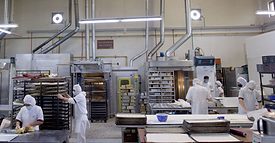Sanitation
Water interacts with various food components at a molecular level, which can alter the food composition and properties
Read More
Food on the Move: Managing Hygiene and Safety Risks in Transport
The transportation of bulk food within supply chains presents unique risks, particularly regarding the cleaning processes between loads in different countries and organizations
April 7, 2025
Fundamental Requirements of the 3-A Sanitary Standards and their Relationship with Regulations
Although the 3-A Standards are not regulations, many regulatory authorities treat them as such to permit the use of equipment for food or dairy processing
December 19, 2024
Facilities Focus: Manage Your Physical Plant as a Prerequisite
Failure to properly manage and maintain your physical plant can result in foodborne illness, recalls, and even plant closures
December 11, 2024
Never miss the latest news and trends driving the food safety industry
eNewsletter | Website | eMagazine
JOIN TODAY!Copyright ©2025. All Rights Reserved BNP Media.
Design, CMS, Hosting & Web Development :: ePublishing












